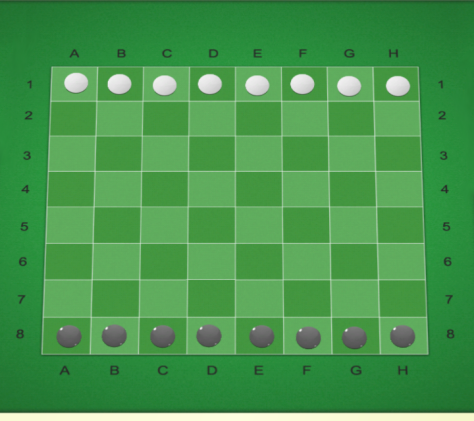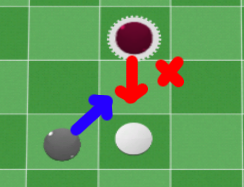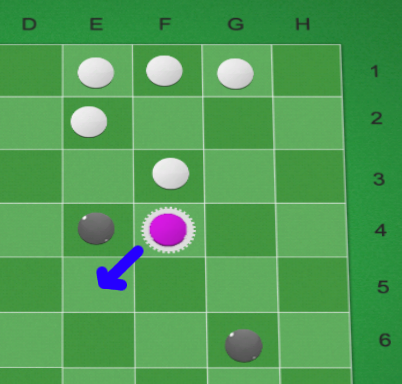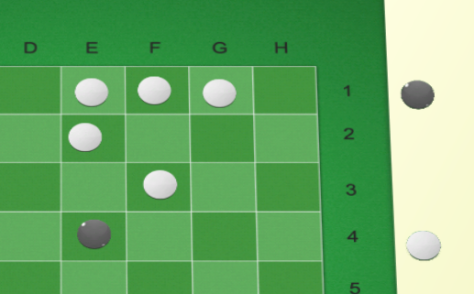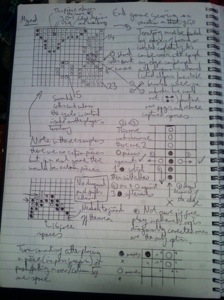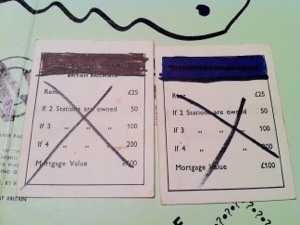Inspiration
The initial challenge came from idle discussion with Paco, host of the G*M*S Magazine podcast, where we talked about rapid prototyping. I suggested that it should be possible to design a game during the podcast, so firstly, I decided to do something while listening to the latest RPG special. This was actually a two part podcast, but the actual time involved was about 17 minutes in total; not bragging, but I regularly set 15 minute game design challenges for my students, which means I was technically 2 minutes over. Of course, some build up and preparation occurred.
Secondly, I always raid local charity shops for games, analogue and digital; the former often being real bargains or at least cheap items for prototyping. Just this week I found a £2 copy of Waddingtons reprint of Scoop, a favourite game of my childhood that I enjoyed as a child, mostly for reading the silly little stories and the simplistic graphic design when ‘constructing’ my newspaper. Last weekend, I also picked up a whole load of other games for less than £10, including a nice, if incomplete version of Othello/Reversi, with 63 (rather than the necessary 64) reversible tokens. One token being missing was probably the reason the game was for sale, but the lack of a piece was a major inspiration for P.A.C.O. in fact. Something about seeing black and white pieces, like pixels in fact, and ‘holes’, gaps on the board seemed quite compelling; the idea of designing a game that wouldn’t be damaged by loss of pieces, and reuse/recycling an existing game, really appealed.
Looking back now, although a draughts/checkers/chess board and pieces could just as easily be substituted, laying all the two sided counters out – easier than just counting them as it allowed me to play pixel art maker – the idea of different types of piece and holes (i.e. lack of pieces) also reminded me of something else…
A few weeks before, I had seen a final year group project, called Tamoanchan, from 2012 graduating students at my own University a few weeks ago:
http://www.youtube.com/watch?v=uyQl8GvsP1M (NOTE: The ‘l’ is a lower case L.)
This game involves lifting and pushing blocks, leaving holes. So, the mechanic fitted with the idea of reusing the board and pieces. However, the challenge then was to see if a board game could be made that was inspired by Tamoanchan, which was simple to play AND fun.
“Inspired by”
I hadn’t originally planned a demake of Tamoanchan – aka ‘dmake’, a term usually applied to retro remakes of modern video games like the amazing Atari 2600 version of Halo:
http://www.atariage.com/forums/topic/166916-halo-for-the-2600-released-at-cge-download-the-game-here/
However, “inspired by” seems appropriate and due credit needs to be given, because Tamoanchan was an influence, although converting a real-time video game into a board game would not be trivial. For example, the video game form is real-time, with major environmental housekeeping and physics simulation, as well as character design and narrative in the art assets; an excellent example is the player avatar animation in the video, where a character watches a block slide past; something that shows the distinction between analogue and digital. Such a bit of polish isn’t needed or possible in a board game. Similarly, player movement in a videogame, using gamepads, buttons, etc, is a different experience to a turn-based board game, which does not have the luxury of automated rule enforcement. I should know after all, I did convert Lunar Lander to board game form once:
http://doctormikereddy.wordpress.com/2009/07/10/eagle-alight-a-board-game-inspired-by-lunar-lander/
This leads to an interesting discussion, namely that of when is analogue remaking, paraphrasing of game content, or wholesale reuse (stealing?) of a mechanic, an acceptable thing to do. There are many examples of games taking a successful idea and evolving it; Dominion ‘deck building’ clone anyone? However, as an academic I need to confess that, after the while, it was clear that P.A.C.O. had, in retrospect, lifted the base mechanical elements of Tamoanchan; specifically, lifting and pushing blocks, and moving round a diminishing board space. It wasn’t planned, but clearly my appreciation for the student project and starting with wanting to make use of an incomplete Othello game converged into the final idea. So, while not completely original – an analogue version of a digital game in development – but hopefully sufficiently unique to be worthwhile. I am hopeful Tamoanchan will see commercial release soon, and worth keeping an eye on.
Game Setup
You need 64 (or less) two sided counters, with different colours on each side, or alternatively two sets of 64 (or less) differently coloured counters, an 8×8 board with cells big enough to hold a counter, and 2-6 figures that have a clear forward direction to represent players, which must fit in a cell of the board (Skylanders work well for large boards, but 35mill figures are fine), 1 or 2 D6 dice for random start locations, pen and paper for each player to write moves out. Board setup is to fill the edge cells with white counters, which leaves a 6×6 grid of currently empty cells, which should be filled with black counters. If you have less than 64 counters, you’ll be left with one or more empty cells. To choose which row/column should be empty, roll a die for row, then again for column and make that the empty cell. [Optionally, the minimum number of empty cells should be no.players-1]. Finally, place the player pieces in the same way, rerolling if a player is placed on or adjacent to holes.
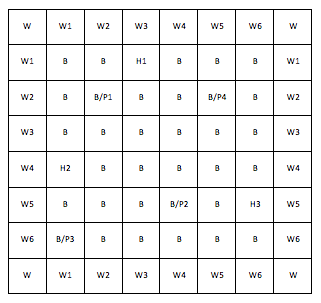
Fig.1 – Example starting board state, showing starting counters, holes at (3,1), (1,4) and (6,5) and players at (2,2), (5,2), (1,6) and (4,5)
Basic concepts
Black pieces represent blocks that can be walked on. White represents blocks that have been raised up and may not be walked on; our characters have Chronic Jumping Syndrome (CJS) that is very common, like Diagonalitis (the inability to walk except along rows or columns). Empty cells (cells with no counters) represent holes. Holes are things you can fall down. So, at the starting point we should have 2+ characters and 1+ holes in a 6×6 grid, surrounded by a wall of blocks.
Players have six options to move each turn:
1) Turn left – figures rotate 90 degrees counter-clockwise from current direction to face either North, South, East or West
2) Turn right – as above, but clockwise
3) Move forward – this must be to a black counter.
4) Jump forward – this must be to a hole (empty cell) and followed the subsequent turn by a Move Forward command. Not doing this will result in falling down!
5) Lift block – the block (black counter) immediately in front of the players is flipped to or replaced with White.
6) Push block – the raised block (white counter) immediately in front of the player is shoved forwards. See pushed block rules.
All players write down their next move; players choosing jump write down the next two moves. When all are finished, moves are declared and implemented. In the following order of priority: rotates, moves, jumps, lifts, pushes. Therefore, if one player lifts a block, it will be available for an adjacent player to push, if that is what was ordered. This allows collaborative, reactive and competitive play, and negotiation as to what to do next is definitely encouraged. However, so is outright lying about what you are going to do next as every point counts and in the end the number of points, kills and deaths will be significant. Play continues until no more legal moves are possible, or by agreement of all the players.
Dealing with conflicting orders
If a player attempts to move into an occupied cell, the move fails. If two players try to move into the same square, roll 1D6 for each of them, the higher one wins and the other fails to move; if an equal roll is thrown, neither move. If a player chooses to jump, then on the second turn there is no black cell to land in, either because there is a hole now or a lifted block or another player, then the jump fails and the player falls down the hole. If a jumper will land on a square that another player has been ordered in to, the same die roll applies as for two players trying to move into the same cell. If a player tries to lift a block when another has given the order to move or jump into that space or it is already occupied, the lift fails, because the move takes precedent. If two players order the same block to be lifted, the action succeeds. However, if two players both try to push the block it fails, by effectively cancelling each other out. If a player is involved in lifting a block and another gives an order that would push it onto the lifting player, the push fails, again by being effectively countered.
Push Block Rules
When a block is pushed, unless the push fails (see above), all previous orders should have been implemented and player pieces moved to the relevant cell. When a block is pushed, it will move in the row or column the player piece was pointing, and will move until it hits another white block or escapes off the edge of the board. If a pushed block meets another white block, it will stop next to it; if there is a hole in this space it will fall down and seal the hole (i.e. become black again) [Optionally, it could fall through]. The hit block then carries on in the direction the original pushed block was going. If it collides, the same rule applies, etc, until a block is removed from the board. If a block hits a player, the player piece is pushed in front of the pushed block as it moves. If the player is pushed into a white block, the player is ‘stunned’ and loses the next turn, while the stopping block moves off in the direction of the initial push; if the player is above a hole when stunned the piece falls through. If a player piece is pushed and does not meet an obstacle, the piece is pushed off the board.
Scoring
When a player piece is stunned, falls through a hole because of a failed jump, or is pushed off the board, the player loses a point. NOTE: a player that falls through a hole because they were stunned will lose 2 points, one for being stunned and one for falling. If the player wishes to be placed back on the board – see respawning rules – the player will lose an additional point. If a player causes another player to be stunned, fall or be pushed off the board, they gain a point. Again, as per the stunned and fallen player, who loses 2 points, a player that causes this to happen will gain 2 points. At the end of a turn, any players remaining on the board (and not stunned) will gain a point. The final winner is determined by how many points they have: the one with the most positive points (or least negative points!) when players agree to stop, or there are no more legal moves, is the winner.
Respawning rules
As per the original placement rules, 2D6 are used to determine the new starting position for respawning players. However, unlike the beginning set up of the game, where if an illegal position is chosen the dice are re-rolled, when players are respawning this does not apply. If the player would have been placed on another player or a white block the respawn fails, but the player does not lose the point. If the player would have been placed on a hole, the player fails to respawn and the player loses a point. Players are free to try to respawn on the following turn, after other players have executed their orders, and having no positive points is not a problem, as players just go into the negative, hopefully to be able to earn points in future turns.

